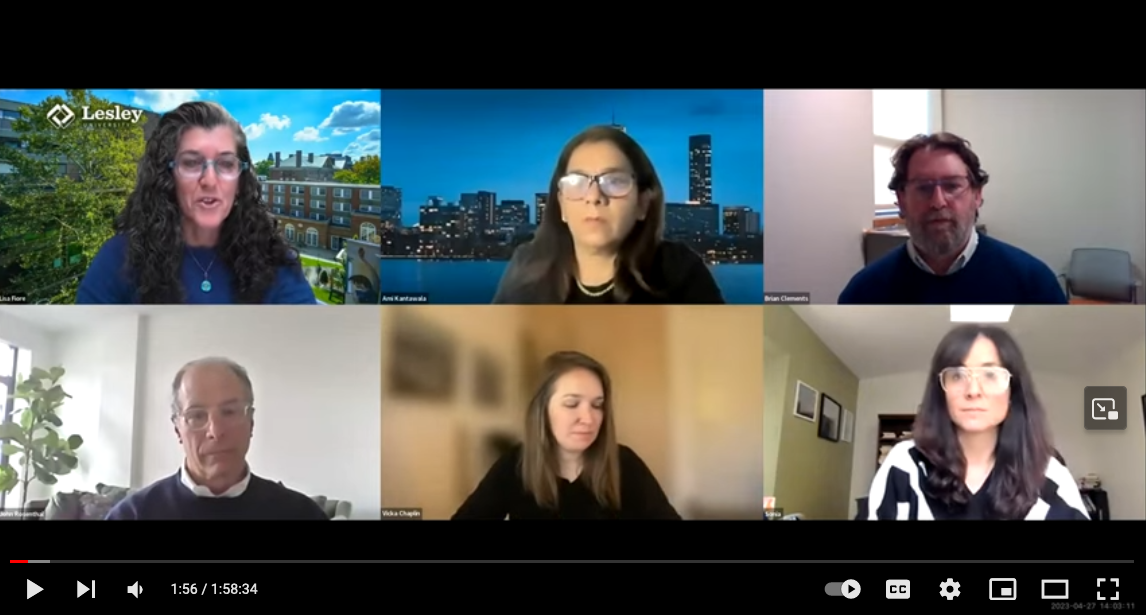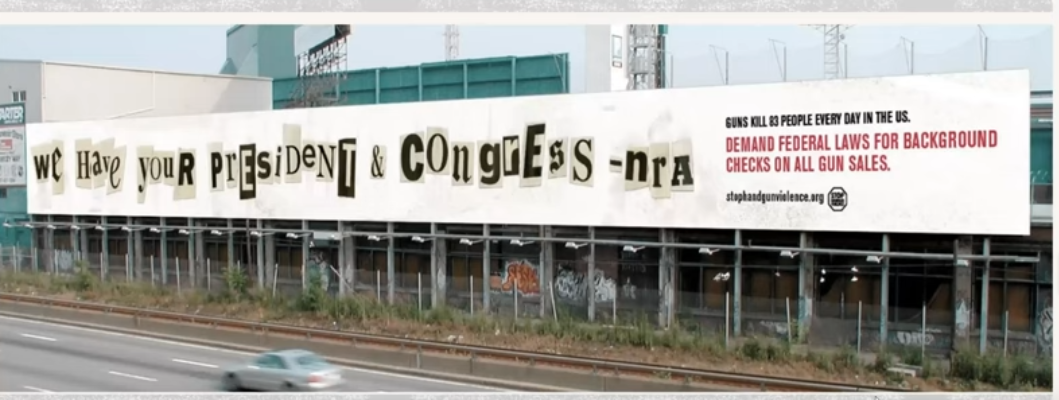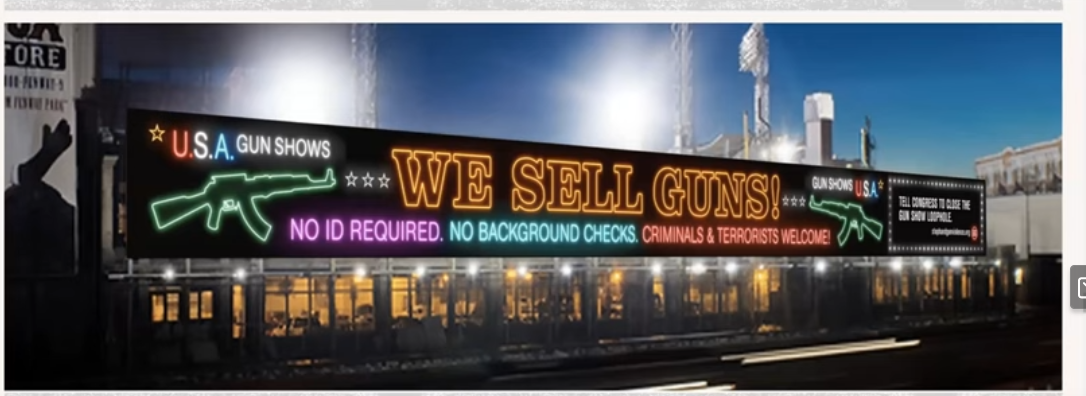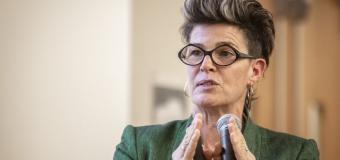Every day, the news carries reports of mass shootings or simply the quotidian gun violence that plagues America’s cities and towns.
Every damn day.
This spring, Lesley hosted a virtual panel on firearms-related havoc, exploring its causes and pointing to interventions that might help bring a measure of remission to this lethal social disease.

Facilitated by Professor Lisa Fiore, chair of our Undergraduate Education Department, the Art and Science of Gun Violence Awareness panel included a nationwide sample of educators, researchers, artists and business leaders.
Panelists included:
- Vicka Chaplin, M.P.H., M.A., director of Education and Communication at the University of California Davis Violence Prevention Research Program and California Firearm Violence Research Center.
- John Rosenthal, president of Meredith Management, a Boston-based real estate development firm.
- Brian Clements, PhD, professor and assistant dean at the Macricostas School of Arts and Sciences, and author or editor of over a dozen collections of poetry.
- Ami Kantawala, adjunct associate professor in the Art and Art Education Program at Teachers College, Columbia University, and a professor in Boston University's online Master of Art Education program.
Pointing out that most guns used in mass shootings are legally owned, Chaplin indicated that tragedy begins at home. Most intentional gun deaths are suicides, and many others stem from domestic violence Chaplin said. What’s more, the instruments of mass mayhem were taken from the perpetrators’ own residences.
“Most school shooters obtain their firearms at home,” Chaplin said. “If you have firearms at home, you can address this risk today, if you haven’t done so already.” Namely, lock up the guns.

While Chaplin alluded to other possible interventions, including gun policy changes, Rosenthal was more pointed in his critique of government inaction. The owner of a parking garage near Fenway Park, Rosenthal has erected billboards on the topic, one of which resembles a ransom note that reads: “We have your president & Congress — NRA.”
“This inherently dangerous product is unregulated,” Rosenthal said, adding that, in many states, “There is no background check required for sale.”
“If you can’t pass a background check, there’s not a problem,” he added. “You can go to 32 other states” and purchase firearms at gun shows, through private sales and other means.
“There have been more school shootings than days of the year so far in 2023,” he said during the April panel.
Clements pointed out a sobering statistic that stemmed from the year that saw the assassinations of Dr. Martin Luther King Jr. and U.S. Sen. Robert F. Kennedy.
“If you count between 1968 and 2015, a million-and-a-half people in the United States died from gun violence of various types,” Clements said. “That’s the equivalent of the city of Phoenix.”

Kantawala discussed the danger of becoming too jaded by daily news reports and gun death statistics, cautioning that school classrooms continue to reel from such violence.
“Each morning as I read through the New York Times, I’m confronted by a barrage of headlines, which detail shootings, stabbings, tragic fatalities across our nation,” she said. “And the journalists who report these events may have become numb to the violence, but for us, as those of us who are in the classroom as teachers, each new story amplifies our sense of powerlessness.”
Nevertheless, she added, though teachers see firsthand the effects of gun violence, they are seldom included in discussions about it.
The Art and Science of Gun Violence Awareness panel was an attempt to, in at least a small but important way, rectify that exclusion.
At the outset, Fiore — an early childhood education expert, parent and former School Committee chair — acknowledged that the subject matter was difficult to ponder and discuss. However, she was impelled to organize the panel precisely because of the discomfort around the subject.
“At the time that I originally thought of this, the incidents of mass shootings were correlating with increased media attention and, of course, increased stress and anxiety,” Fiore said.
Then she watched a documentary by artist William Kelly: “Can Art Stop a Bullet?”
“William Kelly said once, ‘Art can’t stop a bullet, but it can stop a bullet from being fired,’” she added. “And it’s in this spirit of raising awareness and providing a platform for action that (the) panelists have generously agreed to share their work.”

